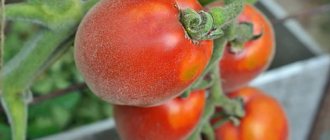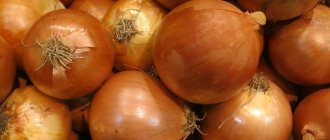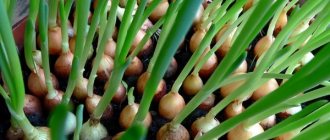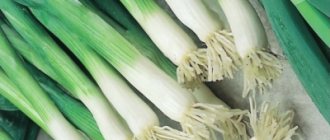Landing dates
The yield of vegetable crops depends on the timing of autumn sowing. It is important that the seeds do not have time to germinate before the onset of winter. If they germinate in the fall, then after the arrival of frost the seedlings may freeze, so no harvest will be obtained.
It is worth planting winter carrots only after the onset of stable cold weather and an average daily temperature within 0...+3°C. If warmer temperatures and rains are expected in the future, sowing the seeds will have to be delayed, otherwise they may germinate.
The optimal time for planting is at the end of October - beginning of November. In the conditions of the southern regions, carrots can sometimes be sown in late autumn, and in the northern regions - in the last days of September. The main thing is to sow at least a week before permanent frosts.
Carrots should not be sown too early or too late. In addition, it is undesirable to sow on the days of full moons and new moons.
Care after landing
After sowing in late autumn, no care is needed. You can only cover the bed with spruce branches or throw brushwood for snow retention. If your region has snowless winters, then lay agrofibre on top, folded in 2–4 layers, press its edges with bricks or stones. In the spring, as soon as the ground thaws, remove the cover. To get a super early harvest, cover with agrofibre in one layer, lifting it on the arcs. In the future, grow carrots in the same way as when sowing in spring.
What varieties should I plant before winter?
For sowing before winter, it is better to choose cold-resistant early and medium-growing varieties of carrots, which include:
- Moscow winter A 515. A variety with a ripening period of 70-100 days and high yield (5-7 kg per 1 sq. m). The orange fruits have an elongated conical shape, weigh 100-170 g and reach 15-18 cm in length. The pulp is juicy and has a pleasant smell.
- Vitamin 6. A variety with a growing season of 80-110 days, when sown in autumn, it is possible to obtain mature cylindrical root crops already in July, weighing up to 80-130 g and up to 17 cm long. They are well stored, but are prone to cracking.
- Nantes 4. It takes about 80-100 days from full germination to harvest. Root vegetables weigh up to 100 g, have a cylindrical shape, a length of 14-16 cm and tender but juicy pulp. Productivity – 6.5 kg per 1 sq. m. The vegetable is resistant to rot and mold, but is prone to blooming. For sowing in the autumn season, you can also choose seeds of the Nantes improved variety. This crop bears fruit with root crops weighing up to 90-160 cm and has a yield of 5-7 kg per 1 sq. m.
- Shantane-2461. A variety with a growing season of 80-120 days, which produces root crops of a truncated conical shape and weighing 100-250 g. Shantane does not tolerate excess organic matter in the soil, but is not afraid of cold weather and is resistant to flowering.
- Losinoostrovskaya-13. The growing season is 80-120 days. Root vegetables weigh 80-120 g, are cylindrical in shape, and are not afraid of rot and mold. The variety is demanding when it comes to watering.
- Incomparable. Carrots with a ripening period of 105-130 days. Root vegetables weigh 100-200 g and have a truncated conical shape. The variety is resistant to flowering, dry soil and cold snaps.
- Nantik Resistafly F1. A hybrid with a ripening period of 85-90 days with an erect rosette of leaves. Smooth, cylindrical root vegetables weigh 95-120 cm and reach 18 cm in length. They can be stored for up to 5 months. Plant productivity is 7-9 kg per 1 sq. m.
- Samson. A variety with a growing season of 110-120 days, which produces root crops weighing 130-300 g. They are not afraid of flowering and cold, and are also well stored.
- Nandrin F1. Carrots with a growing season of 95 to 105 days. The smooth, cylindrical fruits weigh 150-250 g and reach 20 cm in length. The peculiarity of this carrot is that it has practically no core.
- Touchon. A representative of the Amsterdam variety with a growing season of 80-100 days. Root vegetables weigh 100-150 g and reach 15-20 cm in length. They have a sweet taste and delicate structure. Tushon grows well on light sandy loam soils.
- Nectar F1. The period from full germination to technical ripeness of the hybrid is 120-125 days. The dark orange root vegetables weigh 100-150 g, have a cylindrical shape with a blunt tip and a sweet taste. The hybrid is not subject to cracking and discoloration.
- Flakke. A variety with a growing season of 110-150 days, which produces root crops weighing 180-220 and having a truncated conical shape. They do not crack and do not accumulate nitrates.
- Children's sweet. Based on the name, it is obvious that the variety is excellent for preparing food and drinks for children. The growing season is 110-112 days. Red-orange root vegetables weigh 90-130 g, reach 18-22 cm in length and have the shape of a cylinder with a rounded tip.
It is best to buy granulated (panned) seeds that have already undergone the necessary pre-sowing treatment. In addition, they are much easier to sow than very small seeds.
Which varieties of carrots are most suitable for sowing before winter are described in the following video:
Suitable carrot varieties
Early and mid-season varieties are best suited for sowing before winter. Bunch carrots have proven themselves to be excellent. Early ripening and cold-resistant varieties with a high percentage of seed germination give a rich harvest.
The table shows the most popular and proven varieties of carrots.
| Name | Ripening time (days) | Weight, g | Length, cm | Coloring | Form | Productivity, c/ha |
| Vitamin 6 | 100-110 | 70-90 | 17-20 | Orange | Cylindrical | 199-491 |
| NIIOH 336 | 98-113 | 100-122 | 18-20 | Red-orange | Cylindrical | 49-83 |
| Moscow winter | 70-100 | 100-170 | 15-18 | Orange | Conical | 500-700 |
| Shantane-2461 | 90-130 | 150-200 | 10-15 | Orange | Conical | 100-200 |
| Incomparable | 90-115 | 90-220 | 17-22 | Orange | Conical | 350-600 |
| Losinoostrovskaya 13 | 85-115 | 70-155 | 15-18 | Orange | Cylindrical | 550-700 |
| Nantes 4 | 80-120 | 90-160 | 12-16 | Orange | Cylindrical | 262-305 |
| Altai shortened | 110-120 | 70-150 | 18-22 | Orange | Conical | 299-564 |
| Queen of Autumn | 120-130 | 85-230 | 18-23 | Orange | Conical | 300-470 |
| Nastena has a sweet tooth | 100-120 | 100-150 | 20-23 | Orange | Cylindrical | 315-433 |
| Dayana | 110-120 | 100-160 | 17-20 | Orange | Conical, pointed | 210-434 |
Site selection
When planting carrots before winter, special attention must be paid to choosing the location of the bed. It should be located on a flat area, protected from winds and well warmed by sunlight.
Seeds should not be sown on a slope, as they may be washed away during the spring snow melt. The soil itself should be loose, light and fertile. The best option is loamy or sandy loam soil with low or neutral acidity, since it is loose and nutritious, and does not become very compacted during the winter.
If the site meets these requirements, you need to identify what crops have grown on it over the past 3 years. According to the rules of crop rotation, the best predecessors of carrots are:
- potato;
- onion;
- cabbage;
- tomatoes;
- cucumbers;
- squash;
- zucchini;
- melons (melon, pumpkin, watermelon).
The best harvest of root crops can be obtained if the listed crops grew on the site, under which humus or compost was added to the soil.
As for the worst predecessors of carrots, these are:
- beans;
- parsley;
- dill;
- fennel;
- celery;
- carrot.
After such crops, root crops can only be grown after 3-4 years to avoid infection with common diseases and pest attacks.
After fertilizing the soil with fresh manure or humus, you can sow carrots only after 2 years. If you do this right away, the tops will turn out tall and juicy, and the root crops will be deformed and branched.
How to sow carrots in the fall
To achieve success when planting carrots before winter, it is not enough to choose the appropriate variety, choose the right sowing time, taking into account the lunar calendar and the climate of the region where the vegetable is cultivated.
Much still depends on proper preparation of the beds and care of the crops in the fall of the same year.
Choosing a landing site
Choose a place for winter carrots that is well lit and not blown by cold winds. An elevated southern slope is well suited so that spring water can quickly drain in the spring.
The soil in the garden bed should be loose and fertile, and its mechanical composition should be loamy or sandy loam. The reaction of the soil solution should be slightly acidic or neutral. Only under such conditions can one hope for a bountiful harvest.
The best predecessors of carrots
After the end of the next gardening season, there are no growing garden crops left on the site. It would seem that carrots can be sown in any garden bed and after any crop.
But this is not so, since there are vegetable crops that are good predecessors for carrots. And there are some vegetables after which it is not recommended to sow this root crop.
The following vegetable crops are good predecessors for winter carrots:
- pumpkin;
- cucumbers;
- tomatoes;
- onion;
- zucchini;
- cabbage;
- potato.
It is highly not recommended to sow root crops after peas or beans, since these crops greatly deplete the soil and there are few useful nutrients left in it.
It is prohibited to sow carrots in the same bed for 2 seasons in a row, since pathogens and pests of this vegetable remain on it.
You can sow carrots in the ground in the same place no earlier than after 4 years. But if organic matter was added after harvesting the carrots, then it can be returned to the same place after 2 years.
Preparing the soil for planting
The next step should be to prepare the soil. Here is what work needs to be done in order to then count on a decent and early harvest:
- after harvesting the previous crop, the soil on the site must be thoroughly dug up, simultaneously removing all weed rhizomes and plant debris;
- if the soil is acidic, mineral fertilizers and wood ash should be added, otherwise the root crops will have an irregular shape;
- in the garden bed you need to make holes so that there is 20 cm between rows of plants, and 4 cm between plants in a row;
- Place film on the prepared wells.
How to plant carrots before winter - video from Yulia Minyaeva
How to plant carrots in the fall before winter correctly
After waiting for suitable weather, you need to start sowing the seeds. It is carried out this way:
- remove the protective film from the holes;
- Sow carrot seeds in pre-prepared holes 3 cm deep;
- fill the grooves with seeds with warm and dry soil;
- Place a three-centimeter layer of peat or humus on top;
- Lightly compact the soil.
Advice! To prevent the seed furrows from being damaged by autumn rains before planting the seeds, cover the bed with plastic film. Secure the corners of the film sheet with bricks to prevent it from being blown away by the wind.
Useful video about planting carrots before winter from the Garden World channel
Soil preparation
The area for sowing carrots must be prepared in advance, before the cold weather arrives, when the soil has not yet frozen. So, 1-1.5 months before planting, you need to perform the following steps:
- Clean the area after the previous crop, removing all weeds and plant debris.
- Conduct a deep digging of the bed with a spade blade (30-40 cm). In this case, it is worth fertilizing the soil, but avoiding organic matter in the form of manure. It is best to add 2-4 kg of humus, 20-25 g of superphosphate and 10-15 g of potassium salt per 1 square meter to the soil. m. Mineral fertilizers can be replaced with ash, since it contains phosphorus, potassium, magnesium, calcium and other elements. Apply it at the rate of 1 glass per 1. sq. m. m. Select other fertilizers depending on the type of soil:
- In acidic soil, be sure to add either 1 glass of wood ash, or 150 g of dolomite flour, or 300-400 g of chalk per 1 square meter. m, since they neutralize the acidic environment;
- heavy, clayey soils should be diluted with sand or half-rotten sawdust, as they will make the soil more airy and loose, but fresh sawdust and other undecomposed components of organic nature must be discarded, otherwise they will attract carrot flies that are dangerous to root crops;
- Poor soils should be additionally fertilized with nitrogen fertilizers at the rate of 1 tbsp. l. per 1 sq. m, but no more, since exceeding the specified dosages will not enhance the plant’s productivity, but will lead to cracking and deformation of the root crops.
- After digging, loosen the soil deeply and make grooves in it to a depth of 4-5 cm and every 15-20 cm. When the time comes to sow the seeds, the grooves will compact and settle, so the depth will not exceed 2-3 cm.
- Cover the prepared area with film or other material that does not allow moisture to pass through, so that the bed is not washed away by rain and the ground is not blown away by the wind. The sides of the shelter must be secured with bricks, boards, stones or any other heavy material that can be found at hand.
You can sow any green manure on the site and, when it grows to 15-20 cm, embed it in the soil, since carrots love a high humus content.
Carrot seeds can simply be sown on the surface of the soil without making any furrows. The area will simply need to be sprinkled with pre-prepared loose soil and covered with spunbond, which can be removed in the spring when the snow melts.
However, even when sowing seeds in furrows, it is necessary to prepare a dry mixture in advance to seal them. Sowing work is carried out at a time when the soil is already cold, and in some places it even freezes into clods, so it will not be possible to evenly cover the seeds with it.
While the weather is warm, you need to prepare dry soil, sifted through a coarse sieve, as well as compost, humus or a mixture of them with peat at the rate of 4-5 buckets per 1 square meter. m (it is advisable to sort the composition with your hands so that there are no lumps, and dry in the sun). Pour the workpieces into boxes or bags, which should be kept in a dry and warm place, for example, in a frost-free barn.
If the dry mixture for sowing the seeds is not prepared, you will have to purchase ready-made peat-based soil at the garden store. A crust does not form on it, so it will not be difficult for sprouts to break through.
You can learn about the method of preparing a bed for autumn sowing of carrots from the video below:
Preparatory work
When sowing carrots in winter, the main emphasis is on soil preparation. Seeds do not need pre-sowing treatment.
Seeds
To sow carrots before winter, dry seed material is used without prior preparation. Soaked or pelleted seeds (in a nutrient shell) germinate in the fall and die at the first frost . Dry seeds overwinter in the soil until spring, and then quickly germinate with the arrival of warmer weather.
The amount of seeding material is increased by 20-25% compared to spring sowing - some of the seeds will inevitably freeze in the winter, and some will not “wake up”.
Priming
After the autumn harvest, plant residues are completely removed from the site and the soil is dug up to a depth of 25-30 cm. At the same time, potassium, phosphate and nitrogen fertilizers, and organic matter (peat, compost, humus) are applied. The composition and amount of fertilizer applied depends on the nutritional value of the soil.
When there is a deficiency of phosphorus, carrots grow crookedly; when there is an excess of nitrogen, the roots become highly branched. The crop reacts to fresh manure with ugly, branchy and tasteless root crops.
The most favorable period for fertilizing is after harvesting or during autumn plowing.
The first portion of fertilizers should contain 15 g of double superphosphate, 15 g of urea, 15 g of potassium nitrate per 10 liters of water. Consumption - per 1 sq. m.
The second portion is added after 3-4 weeks: 20 g of potassium chloride and 20 g of “Nitrophoska” per 10 liters of water. Consumption - per 1 sq. m.
Important! After planting fresh mullein in the soil, carrots are allowed to be sown only after 1.5-2 years.
Normalizing nutritional value, improving the structure and looseness of the soil are the primary tasks of the gardener. The soil should be loamy, nutritious, with a neutral pH = 6.5-7 units. To deoxidize acidic soil, use ash, slaked lime or dolomite flour - 400-500 g per 1 square meter. m.
At the beginning of October, the soil is loosened, leveled and long furrows 3-5 cm deep are formed, the bottom is compacted with a wooden block. The beds are left in this form until frost.
Separately prepare soil for filling furrows and mulch. The prepared soil mixture is poured into bags and stored indoors at temperatures up to +10°C...+12°C so that the soil does not freeze and dries out a little.
Preparing seeds for sowing
Not all carrot varieties are suitable for autumn planting. Therefore, when purchasing seeds, you need to ensure that the packaging indicates that this crop is suitable for sowing before winter. It is advisable to purchase seeds immediately from a specialized store, since their high quality significantly increases the chance of getting good seedlings.
There is no need to treat seeds with growth stimulants before planting, since when planting in autumn, the goal is not to achieve rapid germination. On the contrary, this should not be allowed, since with their rapid germination there is a high probability of losing the entire crop.
As a last resort, the seed can be dipped in a weak solution of potassium permanganate to disinfect it from possible diseases. After soaking, they must be thoroughly dried, since seeds for winter sowing must be dry.
When sowing carrots before winter, the seed rate should be increased by 20-25% in order to insure in case of snowless weather and thaw.
Soil preparation
The soil should be prepared for planting immediately after harvesting the predecessors. It needs to be fertilized and dug up onto the bayonet of a shovel.
If the soil is light sandy, you need to add humus and turf soil.
Excess sand in the soil makes carrots tasteless and grassy!
Peat and humus are added to clay and loamy soil. It is recommended to add nitrophoska mineral fertilizer, which contains nitrogen, phosphorus, and potassium.
Wood ash with a richer mineral composition can replace it. It is especially good for acidic soils. Add 1 cup per square meter.
Sand is added to clay soil to make it loose.
Rotted sawdust can be added to any heavy soil. If horsetail grows on the site, this is the first sign of acidic soil. High acidity can be combated with lime or dolomite flour. It is applied under the top layer, no deeper than 20 cm, and filled with water.
The root vegetable loves loose, slightly acidic soils.
To avoid the death of seeds, you should not add fresh humus, unrotted manure or fresh sawdust to the soil.
After fertilizing and digging, furrows 3 cm deep are made in the beds and compacted. A soil mixture consisting of soil, peat, and humus is prepared, which is stored at positive temperatures to prevent freezing.
Sowing seeds in the ground
With the arrival of persistent cold weather, a drop in temperature to +5°C and freezing of the soil to a depth of 5-8 cm, you can begin sowing seeds on the frozen ground. As a rule, favorable conditions occur in late October - early November. The sowing instructions are as follows:
- If the prepared area is covered with snow, carefully clear it with a broom.
- Pour dry seeds at a distance of 3-4 cm from each other into previously prepared grooves to a depth of 1 cm (for dense soil) or 3 cm (for light soils in dry areas). Seeds can simply be sown directly on the surface of the ground. To ensure accurate planting, it is better to use a special seeder for carrots, on which you can set the optimal sowing step. The seed consumption rate for winter planting is 0.8-1 g per 1 square meter. m. When planting in spring, this figure is 0.6-0.8 g per 1 sq. m. m.
You can also sow radish or lettuce seeds in the garden bed so that in the spring they will mark rows of carrots for more comfortable weeding and loosening of rows.
- Seed the seeds with pre-prepared dry soil, and then mulch the bed with organic matter with a layer of 3-4 cm. The mulch needs to be compacted so that it does not get blown away by the wind.
- At the first precipitation, rake the snow onto the bed and press it with spruce branches to cover the layer of mulch. In conditions of little snow in winter or areas with constant droughts, it is worth additional measures to retain snow in the garden bed. To do this, it needs to be covered with a layer of coarse mulch, for example, large branches, fallen leaves, spruce and pine spruce branches.
The crops do not need to be touched until the spring thaws, since in winter the seeds will simply “sleep” in the ground.
Planting winter carrots
After what crop should carrots be planted?
In order to grow a good harvest of healthy root vegetables, you need to know after which you can plant carrots. The best precursors for carrots are considered to be the following crops:
- cucumbers,
- onion,
- tomato,
- zucchini,
- pumpkins,
- watermelons,
- squash,
- potato,
- cabbage.
Especially if humus or compost was added to the soil under them. But after crops such as beans and parsley, carrots are not grown.
Readers ask if it is possible to plant carrots after carrots. Absolutely not - carrots can only be replanted in the same place after four years. And after adding fresh manure to the soil, carrots can be sown in this area only after two years.
Carrots before planting - preparation
Planting carrots in open ground begins with purchasing seed. What varieties of carrots are best to sow before winter? Early varieties are suitable for this purpose, for example, Vitaminnaya-6, Shantane-2461, Losinoostrovskaya-13, Moscow winter A-545, Nantskaya-4 or Incomparable. For pre-winter sowing, you will need a quarter more seeds than for spring sowing, but do not try to purchase pelleted seeds or those glued to tape - you need regular fresh seeds that have not been pre-treated.
Growing carrots from seeds - planting and caring for the garden
Soil for carrots
The bed for carrots must be prepared in advance, before the cold weather. Loosen the deeply dug soil, make grooves 3 cm deep in it, compact the bottom in the grooves and wait for frost. Separately, prepare dry soil in bags for filling furrows and organic fertilizer - humus, compost or their mixture with peat at the rate of 4-5 buckets per 1 m². It is better to store bags of soil and fertilizers in a frost-free shed.
How to plant carrots before winter
Planting carrots in the fall is done when the soil freezes 5-8 cm. Even if snow falls by then, it’s okay - clear the bed of snow, sow dry carrot seeds in the furrows, cover them with dry soil, mulch the area with a layer of prepared organic matter 3-3 inches thick. 4 cm, compact it so that the mulch is not blown away by the wind, and cover the bed with snow again.
- Growing vegetable seedlings
Caring for carrots after planting in the fall
If the snow has not yet fallen before sowing the seeds, cover the bed with mulch with spruce or pine spruce branches, but do not forget to throw a small snowdrift on the bed after the first snowfall.
In the spring, when the snow begins to melt, remove the spruce branches, and if too much snow has fallen, then remove some of the snow so that it melts faster. When the snow melts, install metal arches on the bed and stretch polyethylene or non-woven material over them - this measure will speed up the process of germination.
Spring planting care
Caring for winter carrots involves timely implementation of a number of activities:
- When the snow begins to melt, remove the spruce branches from the garden bed. You can also rake some of the snow to melt it faster.
- After the snow has completely melted from the garden bed, remove all branches and grass from it. Next, install low arcs along the perimeter of the area, and stretch film or non-woven material over them. This is done in order to protect the seeds from night frosts and speed up their germination.
- When the first shoots appear, remove the covering material. In this case, the weather should already be consistently warm with an average daily temperature of +15°C and above.
- When dense and friendly shoots appear, it is necessary to thin out the plant, leaving a distance of 1.5-2 cm between them. After 2-3 weeks, remove the excess shoots again to increase the interval to 4-6 cm, otherwise the root crops will grow very small. However, when sowing seeds using a seeder, the need for thinning may disappear altogether.
- When the first greenery appears on the surface of the bed, you need to start weeding. Remove weeds only by hand, since when herbicides are applied, root vegetables cannot be eaten for the next 4 months.
- Treat the crop against carrot pests on the 15th day after emergence. To combat snails and slugs, you can use Thunder or another drug.
- During the period of intensive plant growth and when 3-4 true leaves appear, carrots need to be fed. To do this, it is enough to apply a complex fertilizer once, for example, nitrophoska or Fertika, marked “universal,” into the inter-row spacing.
- If a dried crust appears on the ground, the soil must be watered so that it becomes evenly moist. Under no circumstances should it be allowed to become over-watered, since even with slight stagnation of water, the plant can rot. After watering the soil, it is also worth loosening the row spacing.
Harvesting
When planting carrots before winter, the root crop can be harvested already in the first ten days of June. They can be collected even before they reach technical maturity. The fact is that even fruits whose diameter does not exceed the thickness of a finger can be eaten.
When harvesting, root vegetables should be dug up or carefully pulled out, separated from the tops and stored in a dark, cool and dry place. Carrots should not be left in the garden, because under the pressure of sunlight they will become lethargic and lose some of their nutrients.
Winter varieties of carrots are not suitable for long-term storage, so they should be eaten in the summer.
☝️ Aftercare
After the snow melts in spring, the first thing to do is remove the mulch layer . To make seedlings appear faster, low arcs of thick wire are installed above the bed and covered with non-woven material or plastic film. The shelter is removed after stable warm weather has established. The average daily temperature should be from +15 degrees.
The first watering is carried out after the top layer of soil has dried.
After the emergence of seedlings, weeding should be done regularly . It is important that the soil does not become crusty, as this significantly impairs the aeration of root crops. Weeds are removed as they appear.
At the beginning of the growing season, plants add potassium, phosphorus and nitrogen to the bed. Organics are not used during this period.
Further care is as follows:
- After 2-3 true leaves appear, the crops are thinned out. There should be about 4 cm between individual sprouts.
- As the carrots grow, the beds need to be hilled up, covering the tops with soil. Areas that are left outside will accumulate solanine, which gives vegetables their bitterness.
- The crop needs to be watered regularly, but moderately. If there is too much moisture, the roots will crack. In dry times, watering should be done 3 times a week, and in moderate weather - 1-2 times. You need about 8 liters per 1 sq. m. beds.
- To prevent the occurrence of carrot flies, you can plant garlic, onions, cilantro or marigolds nearby. The smell of these plants repels pests.
Harvesting takes place at the end of June or early July. Carrots planted in the spring are just beginning to ripen by this time.
Features of growing winter carrots in different regions
Many gardeners complain that winter carrots go to waste in the spring. This is due to one of two reasons - sowing low-quality seeds or stress resulting from prolonged exposure of seeds to cold soil.
Despite the second reason, the seeds should still be sown in frozen soil, otherwise they may germinate until spring. Meanwhile, depending on the region of cultivation, there are a number of recommendations, if followed, you can increase the likelihood of obtaining a rich harvest.
Moscow region
In the middle zone, sowing seeds should be done at the end of October - beginning of November, when the soil temperature drops to +2-3ºC. The weather should be stable, but with light frosts, so that the sown seeds have time to swell before the real frosts arrive.
Among the cold-resistant carrot varieties for autumn sowing in the Moscow region, the following are most suitable:
- Losinoostrovskaya-13;
- Nantes-4;
- Incomparable;
- Moscow winter;
- Callisto.
Ural
In the Urals, the same agrotechnical measures are carried out as in the middle zone, but for sowing it is better to choose seeds of such varieties as:
- Nantes-4;
- Mo;
- Moscow winter;
- Vitamin-6;
- Altai shortened;
- Incomparable.
When growing carrots in the Urals, it is important to cover the bed well for the winter with a layer of mulch and spruce branches.
Siberia
In this region, the varieties most resistant to the harshest weather conditions are most suitable for sowing before winter. These include:
- Shantanay;
- Nastena has a sweet tooth;
- Altai shortened;
- Dayana;
- Queen of Autumn;
- Nantes-4;
- Vitamin-6;
- Losinoostrovskaya-13.
In Siberia, sowing work is best done between mid-October and mid-November.
When to plant carrots in open ground before winter
If you want to successfully sow seeds and get a luxurious harvest, you need to be responsible about the timing of planting! The procedure performed at the right time is the key to successful cultivation of the crop.
When should you plant carrots? You need to choose the timing of sowing primarily based on weather conditions: the air temperature should drop to 5 degrees Celsius (or lower), just before the frost , when the ground is already a little frozen.
Since different regions of our country have different climatic conditions, it is quite difficult to name a universal time for performing the procedure. However, we can indicate the approximate timing of planting carrots before winter:
- in the middle zone (Moscow region) - approximately the second half of October;
- in Siberia, the Urals, and the Leningrad region - approximately landing in the first half of October;
- in the southern regions - plant in the second half of November, early December.
Important! You cannot plant carrots in autumn when the air temperature is above +6°C.
It is extremely important to observe the optimal sowing time before winter. Otherwise, if planted too early, when conditions are still favorable (warm, humid), the seeds will begin to germinate . And when the first frosts come, the young plants will certainly die, and naturally, nothing will grow the next year.
By the way, if it snows on the day you choose for the procedure, then there is nothing wrong with that. You just need to clear the snow from the garden bed.
Advice! It is recommended to closely monitor the weather forecast. If warming is predicted, then it is necessary to postpone autumn planting.
Carrot planting dates according to the lunar calendar 2022
Many gardeners annually turn to the cycles of the moon for help; it is believed that they can suggest the most and least suitable time for the procedure. There is no scientifically proven evidence of this theory, but many summer residents have noticed a positive result.
So, we can distinguish the following dates for planting carrots before winter according to the Lunar calendar 2022:
- Favorable days: in October - 15, 17, 18, 19, 20, 22, 23, 24, 25, 26, 27;
- in November - 13, 14, 16, 17, 18, 19, 21, 22, 23, 24, 25.
- in October - 2, 16, 31;
Advantages and disadvantages of planting carrots before winter
The advantages of sowing carrots before winter are as follows:
- The gardener manages to get an early harvest of root crops. If spring carrots need to be collected in July, then autumn carrots should be collected in June.
- When planting in autumn, with the arrival of spring, the seeds grow without delay, since during the cold period the essential oils that inhibit their germination disappear from them.
- During the germination period of seeds planted in the fall, there is a lot of natural moisture in the soil, thanks to which you can save time on watering the bed and get tastier carrots. It is known that natural moisture (snow, rain) contains more beneficial elements for plants than water from a tap or even a well.
- The gardener manages to unload the busy spring schedule, because there is much more time in the fall than in the spring.
As for the disadvantages of autumn sowing of carrots, they look like this:
- if the correct planting technology is not followed, the seeds will freeze, so you will not be able to get a rich harvest;
- seed consumption is much higher than in spring, since from the very beginning you need to count on the fact that part of the seed will die;
- there is a risk of spring thaws, during which the seeds will germinate, but with the return of frost the seedlings will freeze and die;
- Winter carrots can be stored for no more than 2-3 months, so the crop often has to be sown in the spring.
Compliance with all the rules for cultivating carrots in the fall will allow you to get an excellent harvest in mid-July. Seeds of varieties planted in spring will only ripen at this time. Collected root vegetables must be consumed as soon as possible, since they are not intended for long-term storage.
0
0
Copy link
Why and who needs autumn sowing of carrots?
As with other crops, winter sowing of carrots has its advantages and disadvantages. The main advantage is that you don’t have to waste valuable time in the spring, the other is that already in early June the crop reaches food maturity. Carrots grow large, juicy and smooth due to feeding on melt water and timely fertilizing. Early spring is characterized by a small number of potential pests, so the risk of crop damage is low. An additional plus is that after harvesting the carrots, vegetable growers have time to grow lettuce, radishes and other crops in the vacated area and harvest before the fall.
The disadvantage of sowing carrots in winter is their short shelf life - the root crops quickly deteriorate. If you use early-ripening varieties for planting, an unexpected thaw will provoke their growth, and subsequent frosts will destroy the sprouts.
Features of growing carrots
Carrots are quite a demanding crop, but they are not at all difficult to grow, as it might initially seem. It is especially demanding on the condition of the soil on which it is planned to be planted. Weed-free soil is perfect for growing this crop.
It should be well loosened and also have good water permeability. The site used for planting this vegetable must have light, fertile soil. It is best to sow seeds where the soil has been properly fertilized with humus several years before the first planting.
Attention! An area with fresh, recently imported humus is not suitable for planting carrots. This is explained by the fact that the vegetable manifests itself negatively in the presence of fertilizers of this type. In addition, it should be noted that ultimately, due to the presence of fresh manure, branched root crops with poor taste characteristics grow.
It is not recommended to plant this vegetable in soil that has been previously fertilized with fertilizer, the composition of which contains an element such as chlorine. This is due to the fact that such soil promotes the development of root crops with excessive branching, as well as curvature. To ensure that the grown vegetable does not have a lot of tails, the soil should not be deoxidized immediately before the planting procedure.
You should always remember that the soil used to grow this crop should not contain large amounts of moisture. Otherwise, you will end up with a harvest with hairy, cracked roots. In addition, it would not be amiss to mention that an excessive amount of moisture provokes the growth of tops.
Choosing a variety for winter sowing
Bundle carrots with early and medium ripening periods have proven themselves best for autumn planting. Breeders have created a group of varieties of winter carrots that are distinguished by excellent germination, frost resistance, early ripening and productivity. Here are the most popular ones:
- Moscow winter A-545;
- Losinoostrovskaya 13;
- Beautiful maiden;
- Incomparable;
- Shantane-2461;
- Nantes 4;
- Vitamin 6;
- NIIOH 336.
Dried seeds are not suitable for autumn planting; you need to use regular seed material. Taking into account the unfavorable winter conditions, it is recommended to sow abundantly, since a quarter of the seeds freeze and do not sprout in the spring.
On a note! Pre-sowing treatment of the material should not be carried out. If the seeds are soaked or germinated, the seedlings will die when the first frost occurs. Dry seeds will overwinter well in the ground, and in the spring they will begin to actively grow.
After what crops can carrots be planted?
The quantity and quality of the harvest depends not only on the correct time for planting vegetable seeds in the fall. Plants are of great importance, after which it is recommended to plant this vegetable in the garden. Carrots should be planted in the place where onions, zucchini, pumpkins or tomatoes were previously planted. It also grows excellently and produces an excellent harvest in those areas of the garden where potatoes, cucumbers or cabbage were previously planted.
Carrots should not be attempted in soil where parsley or beans previously grew. Some gardeners are trying to grow a new crop in the same areas of the garden where it previously grew. In other words, they are trying to re-get a decent harvest of this vegetable where it was already grown. This is an erroneous approach, and in one area it should be grown only 4 years after the last harvest.











